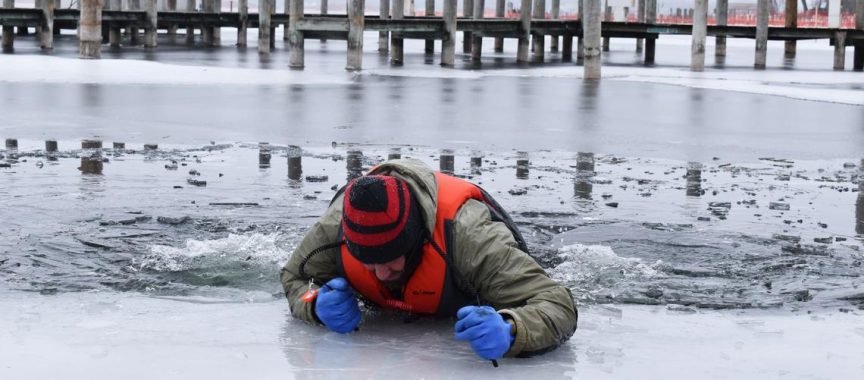With the continued surge in the number of people recreating outdoors this year, the Minnesota Department of Natural Resources reminds everyone that lakes and ponds across the state have started to freeze, and where there isn’t ice, the water is dangerously cold.
Ice thickness is highly variable at this time of year and subject to Mother Nature’s whims. Even where there isn’t ice, the water is so cold that an unexpected fall in can be deadly. It is vital to talk with children, who are naturally curious about the water, about staying safe.
“The first ice-fishing trip of the season is exciting, but there’s no fish that is worth falling through the ice,” said Rodmen Smith, director of the DNR Enforcement Division. “Vigilance around the water at this time of year isn’t just a good idea – it’s an absolute necessity.”
Anglers and others who recreate on the ice should stay on shore until there’s at least 4 inches of new, clear ice. Anytime people are on the ice, they should check its thickness every 150 feet. Smith urges people to check ice thickness for themselves rather than deciding to walk on the ice based on what they’ve heard or read.
Each year, unexpected falls into cold water lead to serious injury and death. Wearing a life jacket is the best way to avert tragedy, since the initial shock of falling into cold water can incapacitate even strong swimmers. Carrying a good set of ice picks can help a person get out if they fall through the ice, and a cell phone, whistle or other communications device makes it more likely they will be able to call for help.
General ice safety guidelines
No ice can ever be considered “safe ice,” but following these guidelines can help minimize the risk:
- Always wear a life jacket or float coat on the ice (except when in a vehicle).
- Carry ice picks, rope, an ice chisel and tape measure.
- Check ice thickness at regular intervals; conditions can change quickly.
- Bring a cell phone or personal locator beacon.
- Don’t go out alone; let someone know about trip plans and expected return time.
- Before heading out, inquire about conditions and known hazards with local experts.
The minimum ice thickness guidelines for new, clear ice are:
- 4 inches for ice fishing or other activities on foot.
- 5-7 inches for a snowmobile or all-terrain vehicle.
- 8-12 inches for a car or small pickup.
- 12-15 inches for a medium truck.
- Double these minimums for white or snow-covered ice.
For more information, visit the ice safety page and the cold water danger page.
Last modified: 11/24/2020













